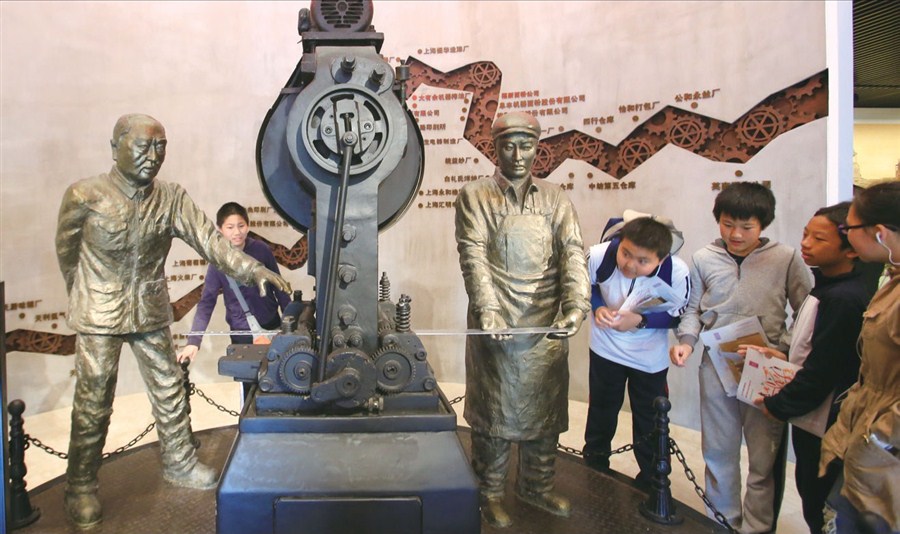- 中文
- EN
- Français
- 日本語
- 한국어
- 繁體中文
Suzhou Heritage Museum Features Industrial Civilization

Young visitors show interest in the 100-year-old weight compressor at the Suzhou Creek Industrial Civilization Museum. The museum has indoor and outdoor displays showcasing artifacts and historical archives. — Zhang Suoqing
SUZHOU Creek is the mother river of Shanghai and a birthplace of modern industry in China. With a tremendous industrial heritage, many of the old factories and warehouses lining the stream have been converted into museums.
The Suzhou Creek Industrial Civilization Museum is the newest, having opened on International Museum Day on May 18.
Suzhou Creek was originally called the Wusong River. The name Suzhou comes from concession times, when foreign nationals often traveled by boat along the river to Suzhou, Jiangsu Province. As time went by, the waterway began to be known simply as Suzhou Creek.
Starting in the 1860s, because of Suzhou Creek’s advantage in transportation, it became one of the regions where early national industry concentrated. Many factories and warehouses were built along the stream over the decades, and by 1949 there were more than 1,900 companies of all kinds in what was known as the Huxi industrial district.
Free to the public, the new museum on 2689 Guangfu Road W. sits in the Changfeng Ecological Business District, the former site of the Shanghai glasses factory. The museum has indoor and outdoor displays showcasing artifacts and historical archives.
Outside the museum there are large machines and reconstructions, including a workers neighborhood called Fufengli Residential Ward door.
Recreated scenes
The indoor exhibition hall has an area of 900 square meters. The first floor features recreated scenes from the industrial period, with large oil paintings and multimedia clips presenting what the industrial past looked like.
The second floor traces the development of the industrial civilization along the creek. The four sections give a chronological path marking the achievements of Shanghai, from port opening to the present through 200 items with text and graphic files.
Inside the glass house on the grassy area behind the museum is the hydrogen compressor purchased by Wu Yunchu, the famous modern industrialist, chemist and the father of monosodium glutamate. The 100-year-old compressor was manufactured by Worthington Pump and Machinery Corporation from United States. Wu bought the ammonia synthesis production unit in 1932 for the company he founded.
The weight compressor, weighing more than 20 tons, was donated by the Shanghai Research Institute of Chemical Industry.
Also displayed outdoors is the British-made cotton cleaner head made in 1920 that once belonged to a textile factory by Suzhou Creek. It was manufactured by The Platt Brothers & Co. The giant cotton cleaner, more than 10 meters long, was used to process raw materials.
The reconstruction of the Fufengli Residential Ward door at the entrance to the exhibition hall was recreated according to the residential dormitory for the workers, built by the first Chinese flour mill. The two wood boards hanging on the door are originals.
In the exhibition hall, the making of coins is recreated. The main exhibit is the coin-making machine provided by the Shanghai Mint Company, which was manufactured in 1978 and was used to produce one-, two- and five-cent coins until 2000.
Zhang Yuequn is a retired worker from the Shanghai Mint Company. He donated 47 precious artifacts to the museum, including sets of coins manufactured by the Central Mint of China, an English typewriter and the original group photo of the first national meeting of China’s Textile Trade Union.
There are also sculptures outside the pavilion that reflect the industrial civilization, like the railroad track made of railroad ties and chains. Most of the pieces are award-winning works by teachers and students in fine arts academies around the country.



